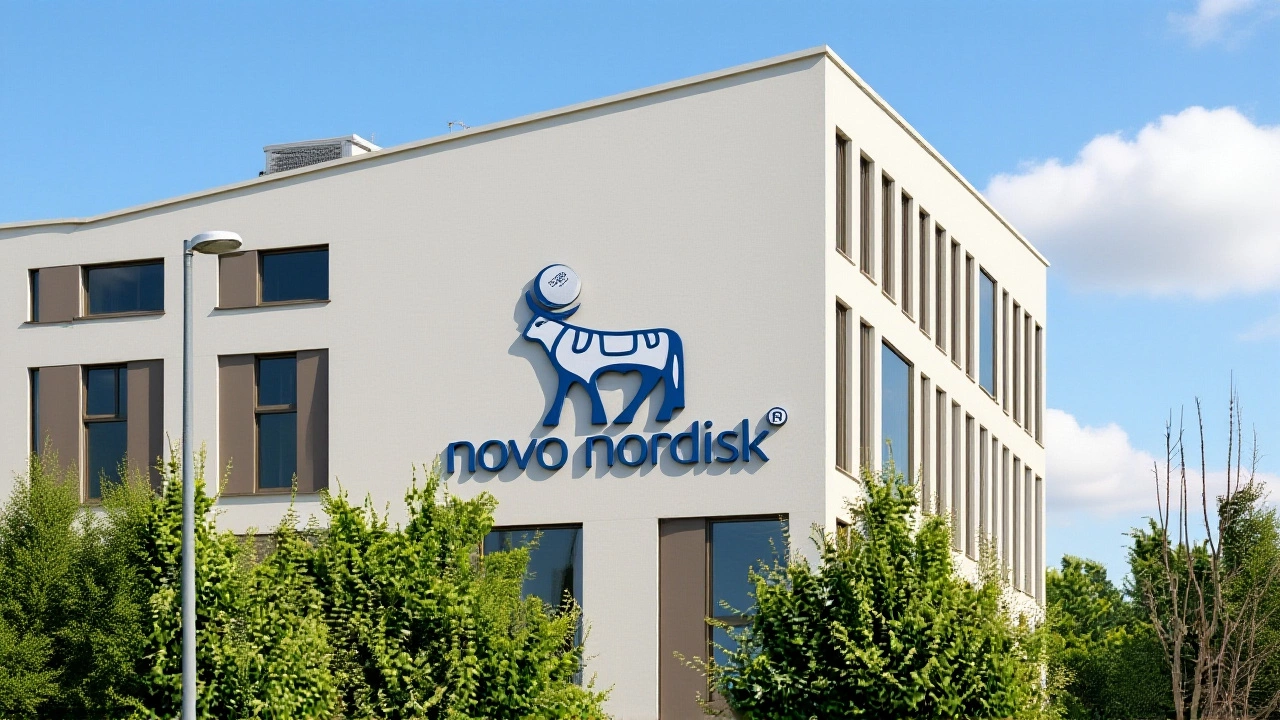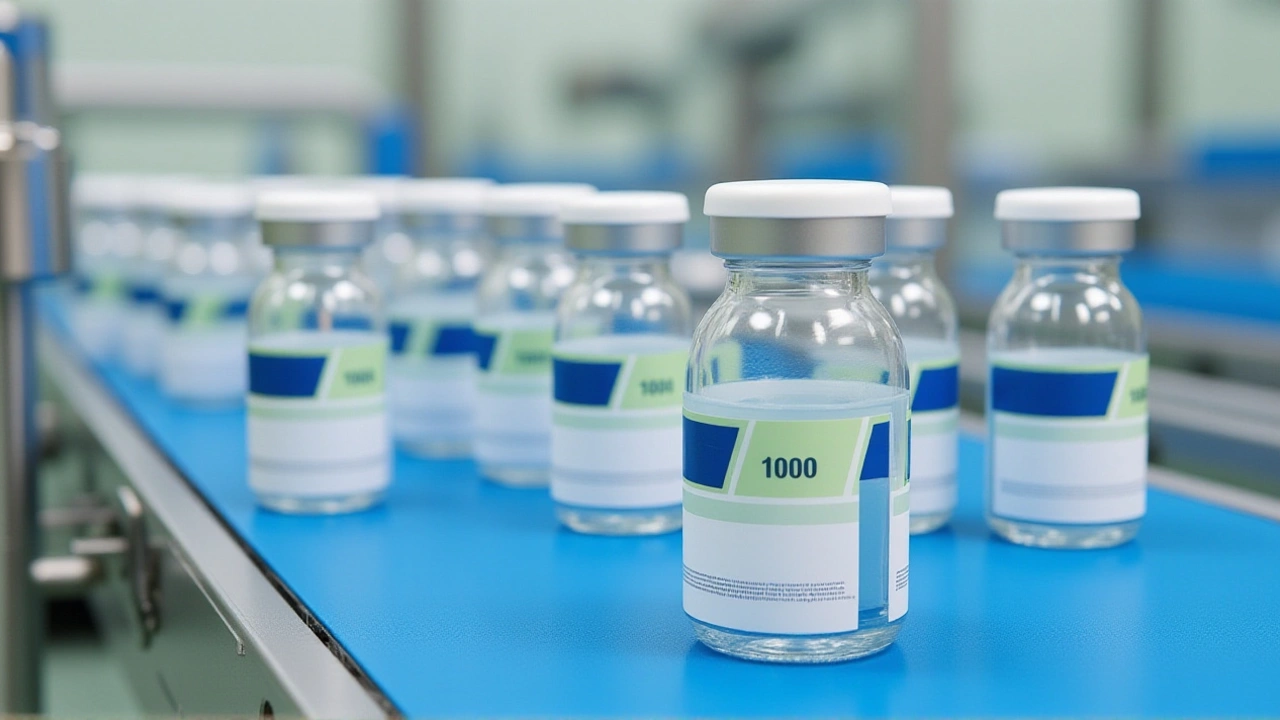Eli Lilly Set to Overtake Novo Nordisk in Weight-Loss Drug Race by 2025
 Nov, 24 2025
Nov, 24 2025
By the end of 2025, Eli Lilly and Co. is poised to surpass Novo Nordisk A/S as the dominant force in the global weight-loss drug market — a seismic shift just three years after Novo Nordisk seemed untouchable. The turning point? A $10 billion quarter. In Q3 2025, Eli Lilly’s dual-action therapies Mounjaro and Zepbound, both containing tirzepatide, smashed expectations, pulling in more than $10 billion in combined sales. Meanwhile, Novo Nordisk’s flagship drugs, Ozempic and Wegovy, generated just under $8 billion in Q2 — a figure that, while still massive, now feels like the beginning of a slowdown rather than a surge.
The Rise of Tirzepatide
Here’s the thing: Eli Lilly didn’t just get lucky. It bet big on a drug that does two things at once — lowers blood sugar and triggers profound weight loss. Tirzepatide, the active ingredient in both Mounjaro and Zepbound, works on two receptors in the body (GLP-1 and GIP), while Novo Nordisk’s semaglutide (in Ozempic and Wegovy) targets just one. That dual-action edge isn’t just science jargon — it’s translating into real patient preference. Doctors are reporting more patients asking for Zepbound by name. Some who started on Ozempic are switching. And those switching? They’re losing more weight, on average.
Novo Nordisk’s Perfect Storm
But wait — Novo Nordisk isn’t collapsing. It’s being squeezed from every side. The company has cut its 2025 financial guidance twice this year. Why? Supply bottlenecks for Wegovy are real. Patients can’t get it. So they turn to compounded semaglutide — cheaper, unregulated, and growing fast. Meanwhile, investor confidence took a hit after disappointing trial results for CagriSema, Novo’s next-gen obesity drug, were presented in March 2025. The data? Underwhelming. Shares plunged 50% year-to-date as of August 6, 2025, and still hadn’t recovered by November.
Even its sales numbers tell a story of slowing momentum. Analysts now forecast Ozempic sales to grow just 7% in 2025 — down from 26% in 2024. Wegovy’s growth is holding at 40%, but that’s expected to drop to 25% next year. Novo Nordisk’s entire diabetes and obesity portfolio, once a cash cow growing at 26%, is now projected to rise just 10% to $46.5 billion in 2025.
Manufacturing vs. Morale
Eli Lilly, by contrast, is going all-in on capacity. The company spent over $5 billion in 2024 expanding manufacturing and plans to invest another $10 billion in 2025. It’s signed contracts worth up to $14 billion with global producers to lock in supply. That’s not just ambition — it’s a declaration of war on scarcity. Meanwhile, Novo Nordisk’s internal battles are growing louder. The Novo Nordisk Foundation, which controls 77% of voting rights, pushed for board restructuring. Shareholders pushed back. The tension reveals a deeper unease: even the foundation, long seen as a stabilizing force, is worried about the future.
What Patients and Traders Are Saying
It’s not just Wall Street that’s turning. On Stocktwits, a retail investor forum, a poll of 3,300 traders in November 2025 showed 32% named Eli Lilly as the obesity-drug stock they were most bullish on over the next five years. Novo Nordisk and Hims & Hers Health tied at 26%. That’s not a fluke. It’s a signal. Patients are feeling the difference. Traders are betting on it. And the numbers are catching up.
Even Novo Nordisk’s recent announcement of an oral semaglutide 25 mg formulation — promising weight loss and cardiovascular benefits comparable to Wegovy — hasn’t sparked the same excitement. Why? Timing. The market’s already moved on. Eli Lilly’s supply chain is scaling. Novo Nordisk’s is still playing catch-up.

The Bigger Picture
This isn’t just about two drugmakers. It’s about how quickly medical innovation can shift. Just five years ago, Novo Nordisk was the poster child for biotech dominance. Now, it’s a cautionary tale of what happens when a company underestimates competition, overpromises on supply, and fails to adapt fast enough. Eli Lilly didn’t invent GLP-1 drugs. But it built something better — and made sure the world could get it.
The broader medical sector has been rough in 2025. Many biotech stocks fell. But Eli Lilly? Up 21% year-to-date. Novo Nordisk? Down 43%. That divergence isn’t random. It’s the market voting with its dollars.
What’s Next?
Expect more pressure on Novo Nordisk’s pricing power. Insurance companies are already pushing back on high list prices. Eli Lilly’s cheaper, more reliable supply could force concessions. Meanwhile, Eli Lilly’s next targets? A once-weekly oral version of tirzepatide and combination therapies with other metabolic agents. The race isn’t over — but the momentum has clearly shifted.
Frequently Asked Questions
Why is Eli Lilly outpacing Novo Nordisk in sales?
Eli Lilly’s tirzepatide-based drugs, Mounjaro and Zepbound, target two biological pathways instead of one, leading to greater weight loss and stronger patient retention. Combined Q3 2025 sales exceeded $10 billion, while Novo Nordisk’s Ozempic and Wegovy generated just under $8 billion in Q2. Eli Lilly also invested heavily in manufacturing, ensuring consistent supply — a key factor as patients switch from Novo’s shortage-plagued products.
What caused Novo Nordisk’s stock to drop so sharply in 2025?
Novo Nordisk’s stock fell 43–50% in 2025 due to two cuts in its financial guidance, supply shortages for Wegovy, disappointing trial results for its next-gen drug CagriSema in March, and rising competition from Eli Lilly. Investor concerns over slowing sales growth, pricing pressure, and a weaker innovation pipeline further eroded confidence, despite its historical dominance in the GLP-1 market.
How are patients responding to the competition between these drugs?
Patients are increasingly switching from Ozempic to Zepbound, citing better weight loss results and fewer supply issues. Compounded semaglutide — an unregulated alternative — has surged in popularity due to Wegovy shortages, undermining Novo Nordisk’s pricing control. Surveys show patients are now actively requesting tirzepatide-based therapies by name, signaling a shift in clinical preference.
What does Eli Lilly’s $10 billion manufacturing investment mean for the market?
Eli Lilly’s planned $10 billion investment in 2025 — following a $5 billion spend in 2024 — signals a long-term commitment to dominate supply. With contracts worth up to $14 billion signed, it’s ensuring it can meet global demand, avoid the bottlenecks that hurt Novo Nordisk, and potentially undercut competitors on price. This scale advantage could lock in market share for years.
Is Novo Nordisk’s oral semaglutide a game-changer?
While the oral 25 mg semaglutide showed promising results at ObesityWeek 2025, matching Wegovy’s efficacy, its timing is poor. The market has already shifted toward tirzepatide, and patients are moving away from injectables. Without a major supply breakthrough, Novo Nordisk’s oral option may arrive too late to reverse its momentum loss, especially as Eli Lilly prepares its own oral tirzepatide.
How do retail investors view this rivalry?
A November 2025 Stocktwits poll of 3,300 retail traders found 32% most bullish on Eli Lilly for the next five years, compared to 26% for Novo Nordisk. This reflects growing confidence in Eli Lilly’s execution, supply chain, and pipeline — and growing skepticism about Novo Nordisk’s ability to maintain its lead amid intensifying competition and internal governance tensions.